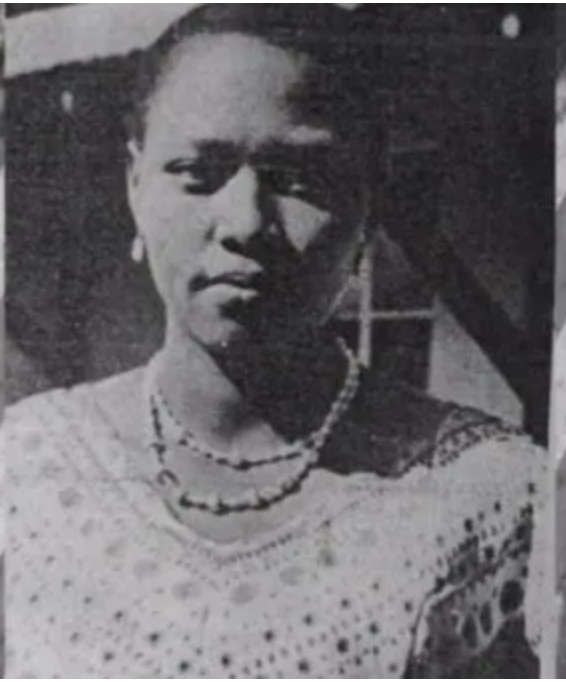
Mwami Theresia Ntare was born in 1926. She was the first of three daughters of Mwami Joseph Gwasa. At the time of her father’s death in 1946. Theresia terminated her studies at Karema and inherited her father as Chief. She ruled from 1946-1962.
Traditionalists believed in the male child. Mwami Theresia’s ascent to the Chiefdom created conflict between Christians and traditionalists, which was neutralized by taking the name of Mwami Theresia Ntare. She was married to George Shinganya and had nine children.
Buha Chiefdom was located in the western part of Tanzania. During colonial rule, it fell under the western province and later the Kigoma province till independence.
By the late 18th century, the Ha of Kasulu consisted of more than one hundred clans with decentralized authority. The Ha are mainly agriculturalists, supplementing their livelihood by livestock keeping. Most of Ha remembers that the Tutsi, mainly pastoralists migrated South – East into Buha. Migrations continued up to the 19th century. Ntare was one of those Tutsi migrants who organized the disunited Ha clans into a centralized government. He consolidated his power through marriage and chieftainship. These two techniques had several significances; polygamy signified wealth and also the social respect of a Mwami. Mwami Ntare also married from almost every area clan to win loyalties among the Ha. He ruled Buha, Heru – Karunga being his headquarters. Other areas were Bunganda, Luguru Ushietu, Buyugu and Manyovu.
Mwami Gwasa was converted and became a Christian. He was baptized as Joseph Gwasa. Being a Christian, he denounced polygamy and did not marry another wife because doing that would bring him a political crisis, tarnish his public image and risk being denied the church services like sacraments and other support from missionaries. He could also have feared what happened to King Henry VIII of England when he decided to marry another wife in 1535 to a male child who would be an heir rather than a girl born by his first wife.
Mwami Theresia Ntare was assisted by advisors, ritual officers, collectors of tribute and others. All these officers were stationed in the Chiefdom state house in Karunga, and later transferred to Heru Juu. There was Watwale represented Mwami in respective administrative areas.
Administrative Structure of Buha Chiefdom
MWAMI → Council of elders (advisory board)
↓
WATWALE
↓ ↓ ↓ ↓ ↓ ↓ ↓ ↓ ↓ ↓
MUYAMA BUHORO BUYENZI KIRUNGWE BUHINGA BUYOGA MANYOVU MNYEGELA
VH VH VH VH VH VH VH VH
Key: VH = Village Headman
Most of Watwale had blood ties with Mwami. They sent reports to Mwami every month. They also sent presents like cattle, honey, grain and tax.
Mwami Theresia Ntare urged her subjects to be self–sufficient in food. Every household was required to have one acre of cassava, bananas and coffee. She stressed planting trees for firewood and timber in Heru juu, Karunga and other areas. Rivers Karunga, Chamata and Rubhona were utilized for irrigating vegetables, onions and maize. In 1955, the Upper Lwiche valley opened up a newly constructed road and increased the production of groundnuts and bananas. The livelihood of Buha is almost entirely dependent on subsistence agriculture and the weather has remained the dominant factor in the life of the Ha.
After independence, leaders of local governments were elected by a majority of native speakers of their respective areas. Young educated men and women and the masses wanted all leaders of tribes to be popularly elected. Leaders of Native Affairs, mostly incumbent chiefs who inherited their posts, wanted to hold on to them. This conflict between ‘inheritance’ and ‘election’ views led local chiefs to form their organ known as Local Association of Chiefs of Tanganyika in 1954, with Mwami Theresia Ntare as its first chair and Adam Sapi Mkwawa as Secretary-General. Their first meeting took place in Mzumbe, Morogoro.
In 1962, Tangganyika Government abolished chiefdoms. Most chiefs educated in the early 1960s were given posts in the newly independent Tanganyika Government. Theresia Ntare became the first Deputy Minister of Culture between 1962 and 1965. From 1965 to 1970, she served in the department of Agriculture in Sumbawanga, Rukwa region. From 1970 to 1978, She was the manager of the Safari Hotel. She retired in 1978. She retired in 1978. She died on 28th July 1995 and was buried at Karunga, Kasulu.
